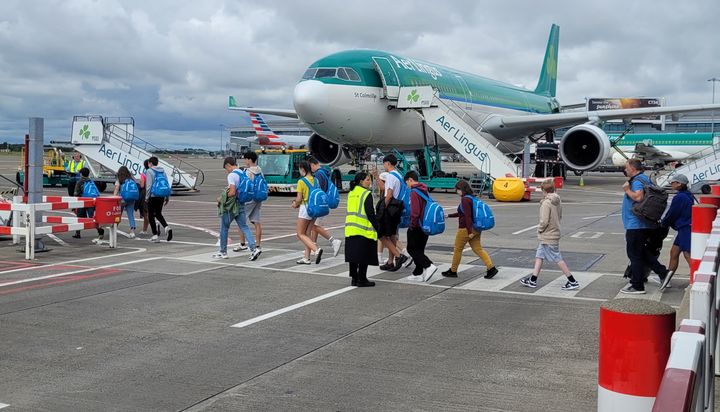
“Hopefully a new government will look seriously at the passenger cap,” she said on Friday as Aer Lingus owner IAG released third quarter results.
“It does damage the Irish economy and it does need to be resolved,” she added. “We hope the planning process can catch up and we’ll get a permanent and positive resolution to this issue, hopefully next year.”
Dublin Airport is subject to a 32 million annual passenger cap under a 2007 planning condition attached to the construction of the airport’s Terminal 2.
The High Court granted a stay this week to Aer Lingus, Ryanair and a US airline lobby group against a decision by the Irish Aviation Authority (IAA) to impose a limit on passenger numbers at Dublin Airport next summer so that the gateway doesn’t breach its planning condition. The IAA planned to do that by reducing the number of available takeoff and landing slots.
Ms Embleton said that IAA proposal “conflicted” with European slot regulations and Aer Lingus’ historic slot rights.
Mr Embleton said Aer Lingus had planned to reduce its capacity next summer by 5pc due to the IAA decision, but will not now need to do that in light of this week’s High Court ruling. She said the stay will allow Aer Lingus to tweak its schedule for next summer, by improving flight timings, for instance.
She said the High Court decision was an “important step” in resolving the passenger cap issue but that there is potentially a “long road” ahead in achieving a final outcome.
Ms Embleton recently highlighted to Aer Lingus staff that the airline has the lowest operating margin in the IAG group, which also owns British Airways, Iberia and Vueling. She said that some localised redundancies would take place, which it hopes to achieve through attrition and a hiring freeze.
The airline’s operating margin in the third quarter was 18.6pc. That was down 6.8 percentage points compared to the third quarter of 2023. IAG chief financial officer Nicholas Cadbury still described that margin as “very good”, in a call with analysts.
Ms Embleton said the operating margin decline in the period was largely attributable to increased across the Atlantic into the capital by 20pc during the summer.
“The impact of this 20pc increase in north Atlantic capacity certainly played a very major part in our summer results,” she said. “It was a difficult environment. That amount of capacity coming into a market in one go was always going to cause a bit of disruption to the normal commercial set up and that’s what we saw in the summer.”
“I’m expecting that to moderate and that the supply-demand balance will become more normal,” said Ms Embleton.
Aer Lingus generated €746m in revenue in the third quarter, which was down 3pc year-on-year. It posted an operating profit of €139m for the period, which was €57m, or 30pc lower year-on-year. Allowing for a €55m hit due to pilot industrial action – mostly in the second quarter – the airline’s operating profit for the first nine months of the year slumped €88m to €148m.

